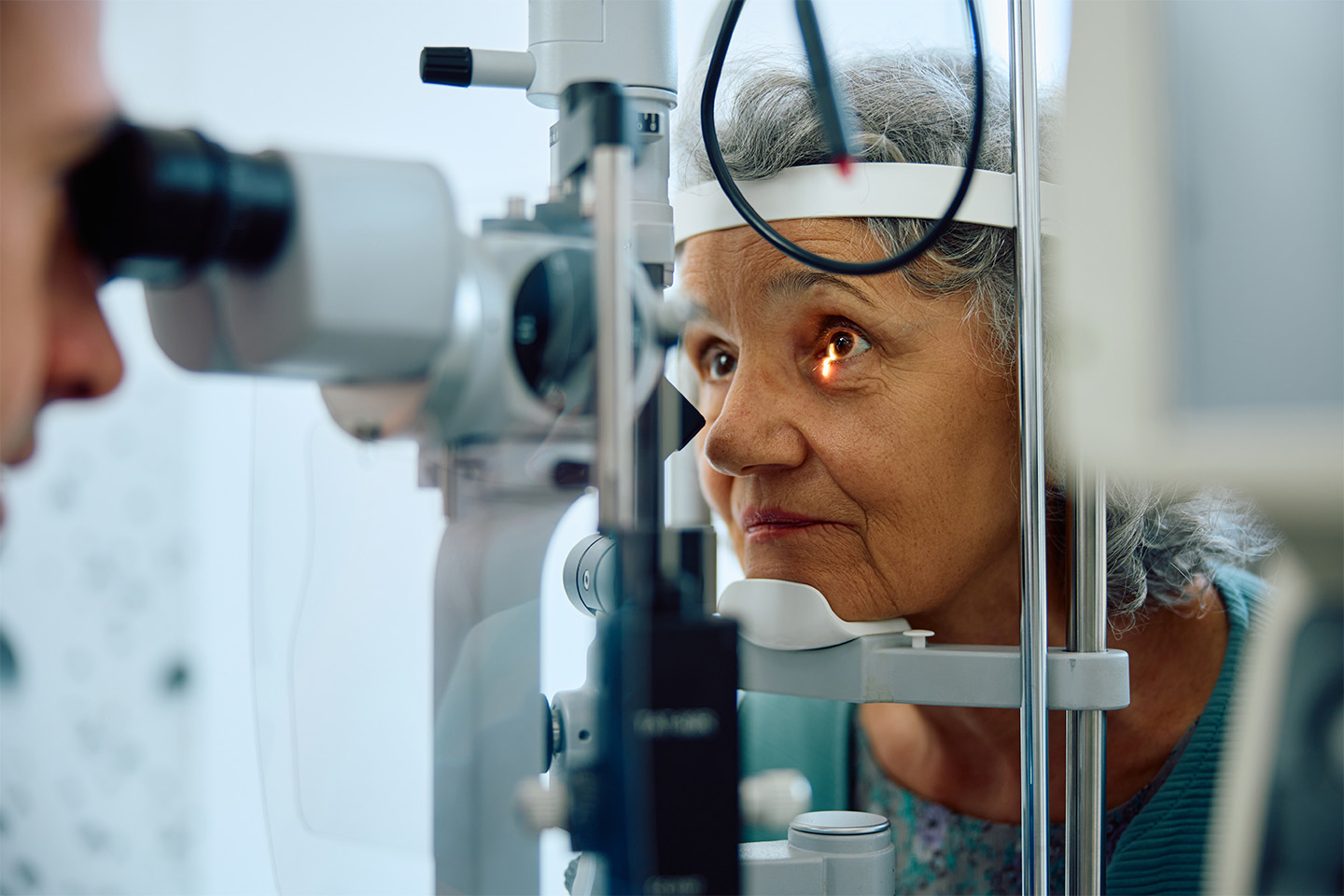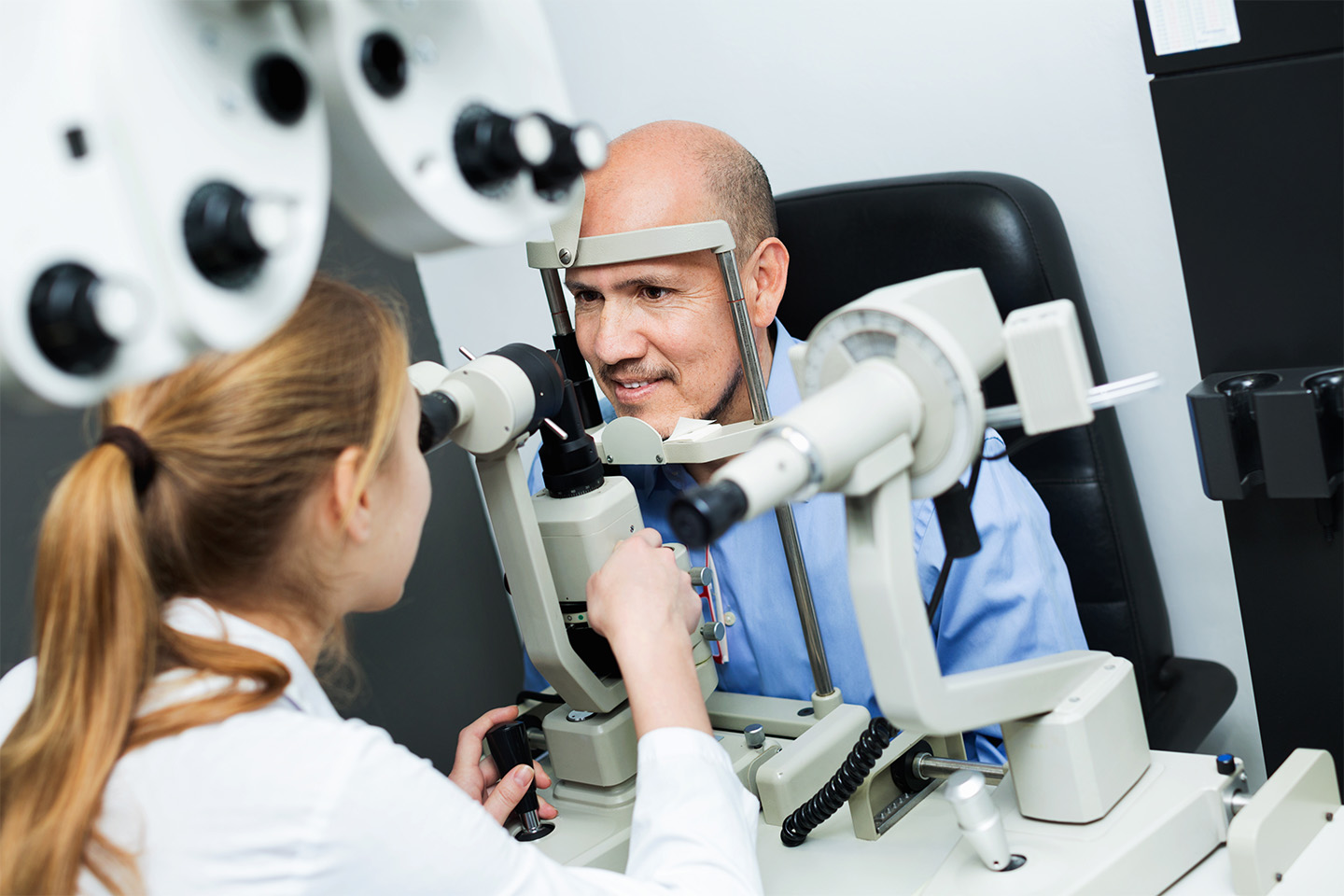There May Be More Correlation between Glaucoma and Genetics than Previously Thought

Studies have uncovered gene mutations that could lead to glaucoma, a sight-stealing disease whose causes have eluded scientists for decades.
Sometimes called the “silent thief of sight,” glaucoma often comes with no apparent warning signs as the progressive disease slowly robs people of their vision. In fact, according to the Glaucoma Research Foundation, half of the 3 million Americans who have glaucoma don’t realize they suffer from the condition, which is a leading cause of blindness in the U.S.
Glaucoma occurs when the eye fails to drain its fluids, resulting in increased intraocular pressure (IOP). A buildup of IOP damages the optic nerve — the pathway by which images are transmitted to the brain. As the disease progresses, patients may notice a gradual loss of peripheral vision. The decline may be so slight many are unaware it is happening. If left untreated, glaucoma results in complete vision loss.
As of now, scientists have not yet determined a definitive cause for glaucoma — it’s long been considered a medical mystery. However, new research indicates that genetic factors may be at play.
The Link Between Glaucoma and Genes
Recent scientific studies point to genetic factors involved in the development of certain types of glaucoma. In primary open-angle glaucoma (POAG), the most common type, there are no eye abnormalities that would suggest someone is prone to the disease. POAG has been linked to mutations in a number of genes, including myocilin, optineurin, and CYP1B1. However, variations in those genes are thought to cause only 10% of glaucoma cases worldwide. Studies have shown changes in other genes play a role in glaucoma as well.
The second most common type, primary angle-closure glaucoma (PACG), develops when the fluid drainage system in the eye malfunctions. This increases pressure in the eye. A recent study identified genetic variants at or near the genes PLEKHA7, PCMTD1/ST18, and COL11A1 in PACG. Although variations were found, a direct correlation between those genes and PACG has yet to be determined.
Though it’s typically associated with old age, glaucoma does occur in younger people. Primary congenital glaucoma (PCG) strikes children from birth to age 3. Anomalies in the CYP1B1 gene has been traced to PCG in children worldwide. In the Middle East and Central Europe, it’s the primary genetic factor. In the U.S., though, the CYP1B1 mutation has been linked to only 15% of PCG cases.
Glaucoma in older children may result from impaired growth of the eye, which is controlled by several genes, including PITX2, PITX3, FOXC1, FOXE3, PAX6, LMX1B, and MAF. When those genes misfire, the eye cannot drain fluids, which eventually leads to glaucoma. But though mutations in these genes have been associated with glaucoma, a person exhibiting these anomalies may not develop the disease.
Although these studies mark a promising breakthrough in finding a genetic link to glaucoma, experts caution more investigations must be done to uncover how the disease develops. With that knowledge, more treatment options can be devised.
Glaucoma and Heritability among Families and Ethnic Groups
Current medical guidelines recommend genetic testing for people whose close relatives have glaucoma since the risk of developing the disease rises by 10 times for patients whose relatives have it. In particular, the prevalence of myocilin gene mutations even in those showing no signs of the disease would warrant genetic testing. Patients who have the mutation can begin early treatment to keep their vision clear for as long as possible
Certain ethnic groups are also predisposed to glaucoma. The incidence of glaucoma is higher among people with African-American, Japanese, Russian, and Hispanic heritage. People of Irish and Scandinavian descent also are at a higher risk. Chronic medical conditions like diabetes can be a precursor to the disease as well.
Treatment Options for Glaucoma
Though there is no cure for glaucoma at this time, early intervention can slow the progression of the disease and minimize its symptoms. Treatment options include medicinal eye drops or surgery to alleviate pressure within the eye by expanding fluid drainage.
If you think you have the symptoms of glaucoma, or have a close family relative with the disease, talk to one of the specialists at Swagel Wootton Eye Institute. We have the expertise to develop a personalized treatment plan for your unique needs. Your eye health is important to us, so contact us at our Mesa and Chandler locations today for a consultation.









